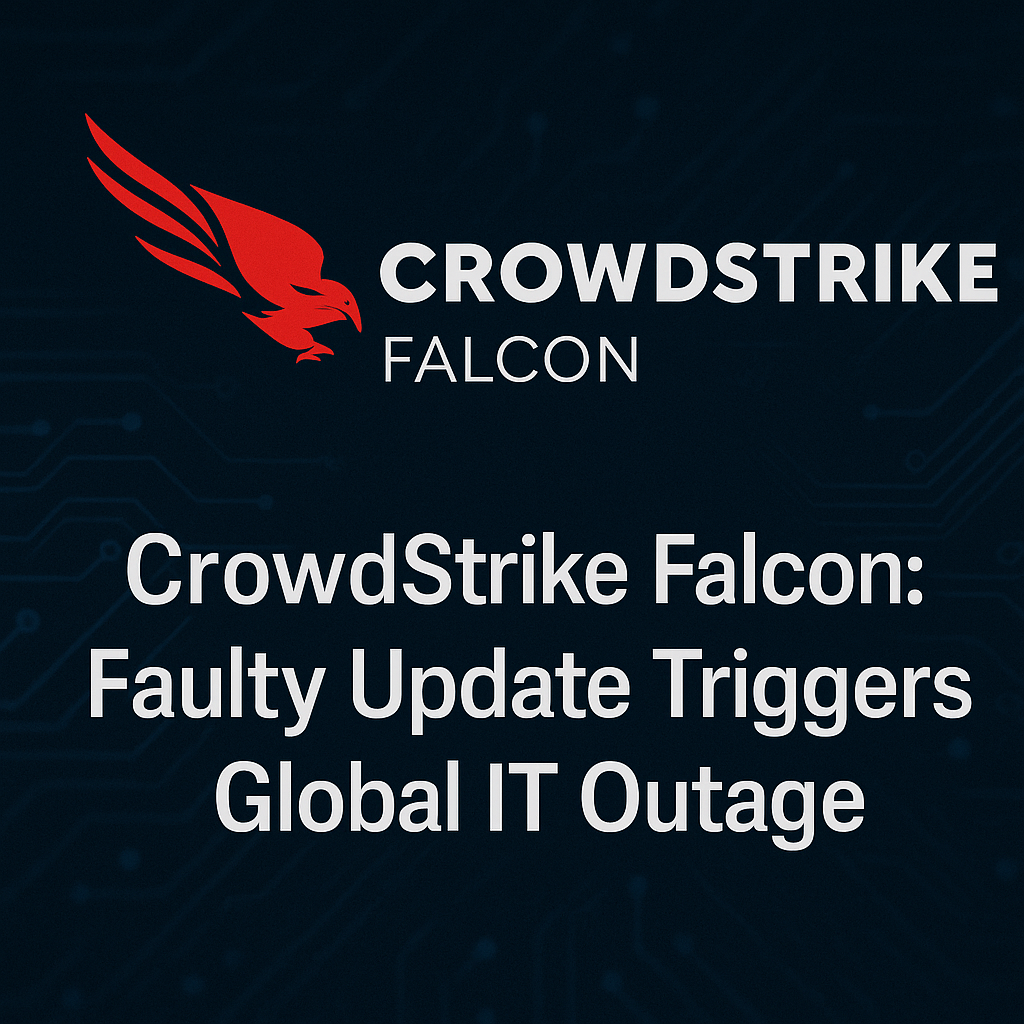
Executive Summary
On 19 July 2024, a defective update to CrowdStrike’s Falcon security software led to one of the most significant IT outages in recent history. The update caused approximately 8.5 million Microsoft Windows systems worldwide to crash, disrupting critical services across various sectors, including aviation, healthcare, finance, and media. This incident underscores the profound risks associated with software supply chain vulnerabilities and the cascading effects of a single point of failure in widely deployed security tools.
Timeline of Events
| Date | Event |
|---|---|
| 19 July 2024 | Faulty Falcon update released, causing widespread system crashes |
| 20 July 2024 | Microsoft reports 8.5 million devices affected globally |
| 24 July 2024 | CrowdStrike publishes preliminary post-incident report |
| 6 August 2024 | CrowdStrike releases detailed root cause analysis |
| 19 May 2025 | Georgia judge allows Delta’s lawsuit against CrowdStrike to proceed |
Technical Overview
The incident was triggered by a misconfigured content update—specifically “Channel File 291″—to CrowdStrike’s Falcon sensor. This update caused an out-of-bounds memory read, leading to system crashes and boot failures on Windows 10 and 11 devices. The issue primarily affected enterprise environments, as the Falcon sensor is predominantly deployed in organisational settings.
Impact Assessment
Global Disruption
The outage had far-reaching consequences:
- Aviation: Delta Air Lines cancelled 7,000 flights, affecting 1.4 million passengers and incurring estimated losses of $550 million.
- Healthcare: Hospitals across North America and Europe postponed non-urgent procedures and lost access to electronic health records.
- Finance: Major banks, including Chase and RBC, experienced service disruptions, impacting customer transactions.
- Media: Broadcasters like ESPN and Paramount channels faced outages, interrupting scheduled programming.
- Retail and Services: Businesses worldwide, from supermarkets to petrol stations, reported point-of-sale system failures.
Legal and Financial Repercussions
CrowdStrike faces multiple lawsuits, notably from Delta Air Lines, alleging gross negligence and seeking substantial damages. The incident also prompted scrutiny from regulatory bodies, highlighting the need for robust third-party risk management.
Analysis & Lessons Learned
This event highlights critical areas for organisational focus:
- Software Supply Chain Vulnerabilities: The incident demonstrates how a single faulty update can have global ramifications, emphasising the need for rigorous testing and validation processes.
- Third-Party Risk Management: Organisations must assess and monitor the risks associated with third-party vendors, ensuring contingency plans are in place for potential failures.
- Incident Response Preparedness: The scale of the outage underscores the importance of having comprehensive incident response plans that can be rapidly activated.
- Communication Protocols: Timely and transparent communication with stakeholders is vital during crises to maintain trust and coordinate effective responses.
Recommendations
To mitigate similar risks, organisations should:
- Implement Rigorous Testing Protocols: Ensure all updates undergo thorough testing in controlled environments before deployment.
- Strengthen Third-Party Oversight: Regularly audit and assess third-party vendors’ risk management and incident response capabilities.
- Develop Comprehensive Incident Response Plans: Establish and routinely update incident response strategies, including clear roles, responsibilities, and communication channels.
- Enhance System Redundancies: Invest in redundant systems and backup solutions to maintain critical operations during outages.
- Engage in Continuous Monitoring: Utilise advanced monitoring tools to promptly detect anomalies and initiate swift corrective actions.
Conclusion
The CrowdStrike Falcon update incident serves as a stark reminder of the interconnectedness of modern IT infrastructures and the potential for widespread disruption stemming from a single point of failure. Organisations must proactively address software supply chain risks, enhance third-party oversight, and fortify their incident response capabilities to navigate the complexities of today’s digital landscape.




